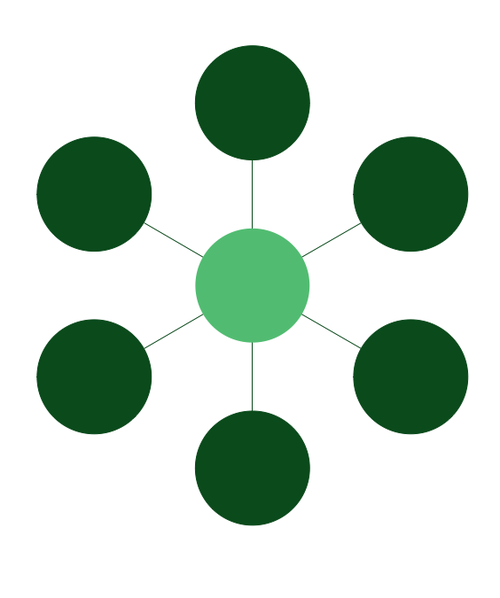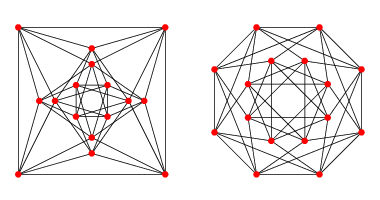Chat Six
 Chat Six
is an application that allows you to invite 6 friends to chat in your private chat room online. Your friend then can create his or her new chat room and invite any 6 friends (including you) into it. Therefore, it is possible for you and your online friend to have at most 5 mutual friends in 2 different chat rooms.
Chat Six
is an application that allows you to invite 6 friends to chat in your private chat room online. Your friend then can create his or her new chat room and invite any 6 friends (including you) into it. Therefore, it is possible for you and your online friend to have at most 5 mutual friends in 2 different chat rooms.
As the community grows larger, every member eventually has 1 chat room of their own (each consisting of 7 persons), and if we pick any 2 persons out of this network (friends or not), they will have 2 mutual friends in common.
If is a number of people in this entire social network, what is the least possible value of ?
Assume there is no deletion of any room or member along the way.
The answer is 16.
This section requires Javascript.
You are seeing this because something didn't load right. We suggest you, (a) try
refreshing the page, (b) enabling javascript if it is disabled on your browser and,
finally, (c)
loading the
non-javascript version of this page
. We're sorry about the hassle.
In order to minimize the value of n, for any 2 persons a and b, if a invite b into a's room, b will invite a into b's room, too. By doing so, we can symbolize all the people in the network as nodes or vertices, connected together with edges or connections, in the graph theory with n = number of vertices.
When we construct graph G: (V , E), where V stands for vertex and E for edge, each vertex will have 6 edges connecting to other 6 nodes. We then have a regular graph of valency or degree of 6 (6 edges), and with a constraint that any 2 vertices share the same amount of mutual nodes, it means that this graph is also a strongly regular graph or a graph that shares the same amount of adjacent elements.
With a strongly regular graph G(V , k , λ, μ) = G(V , 6 , 2 , 2), where k is the degree, λ = amount of mutual friends between 2 connected nodes(friends), & μ = amount of mutual friends between 2 non-adjacent nodes (non-friends), we can calculate V with a formula:
(V - k - 1)μ = k(k - λ - 1)
2(V - 6 - 1) = 6(6 - 2 - 1) = 18. Thus, V = 16.
The illustrative graph is as shown: